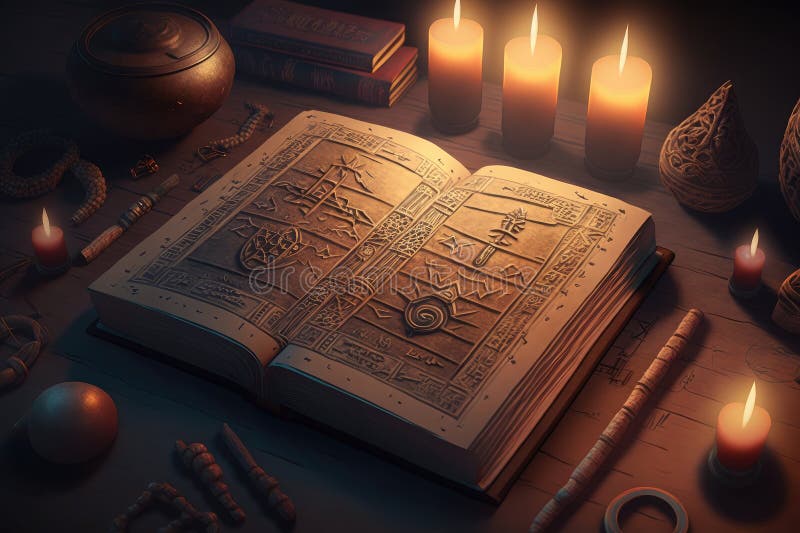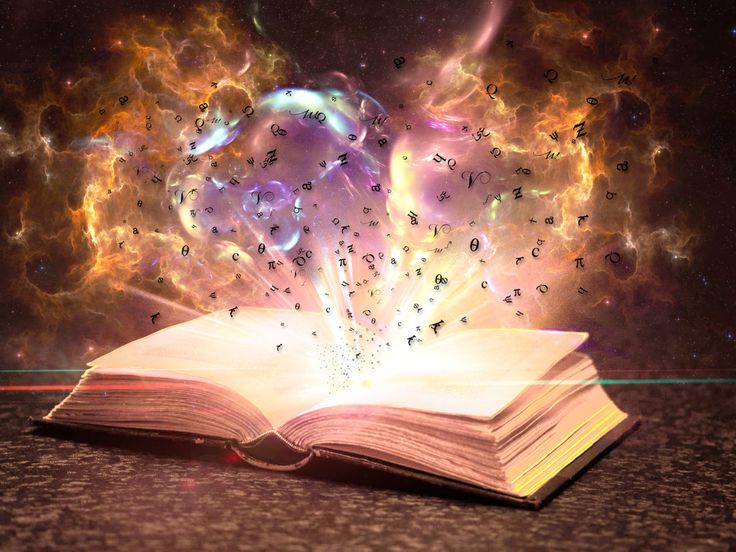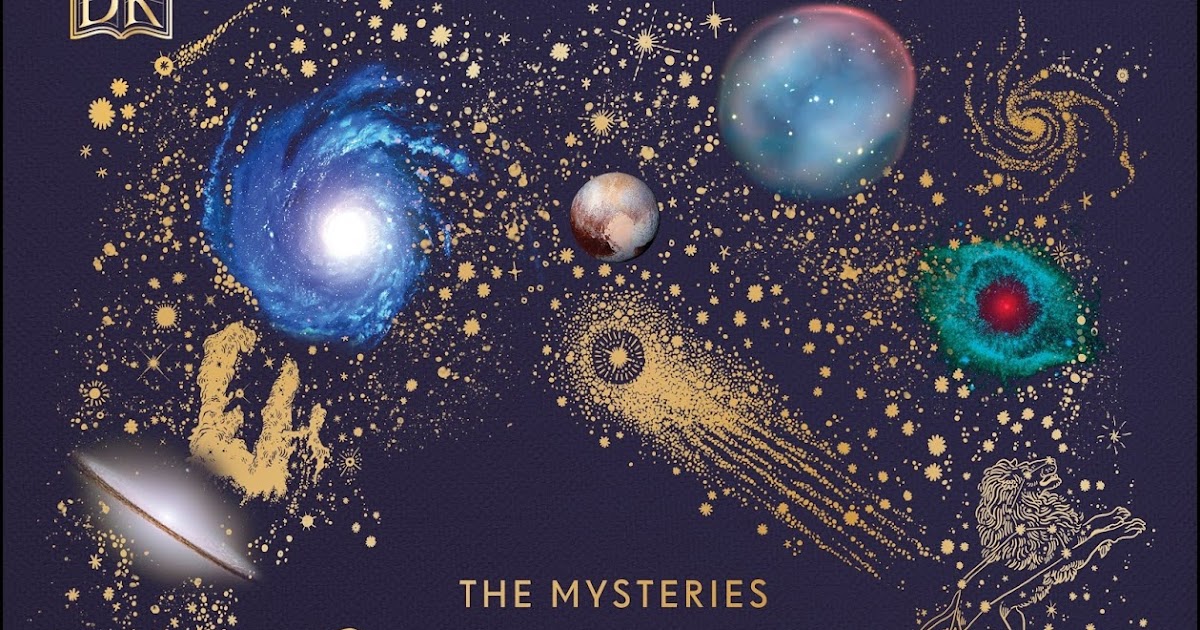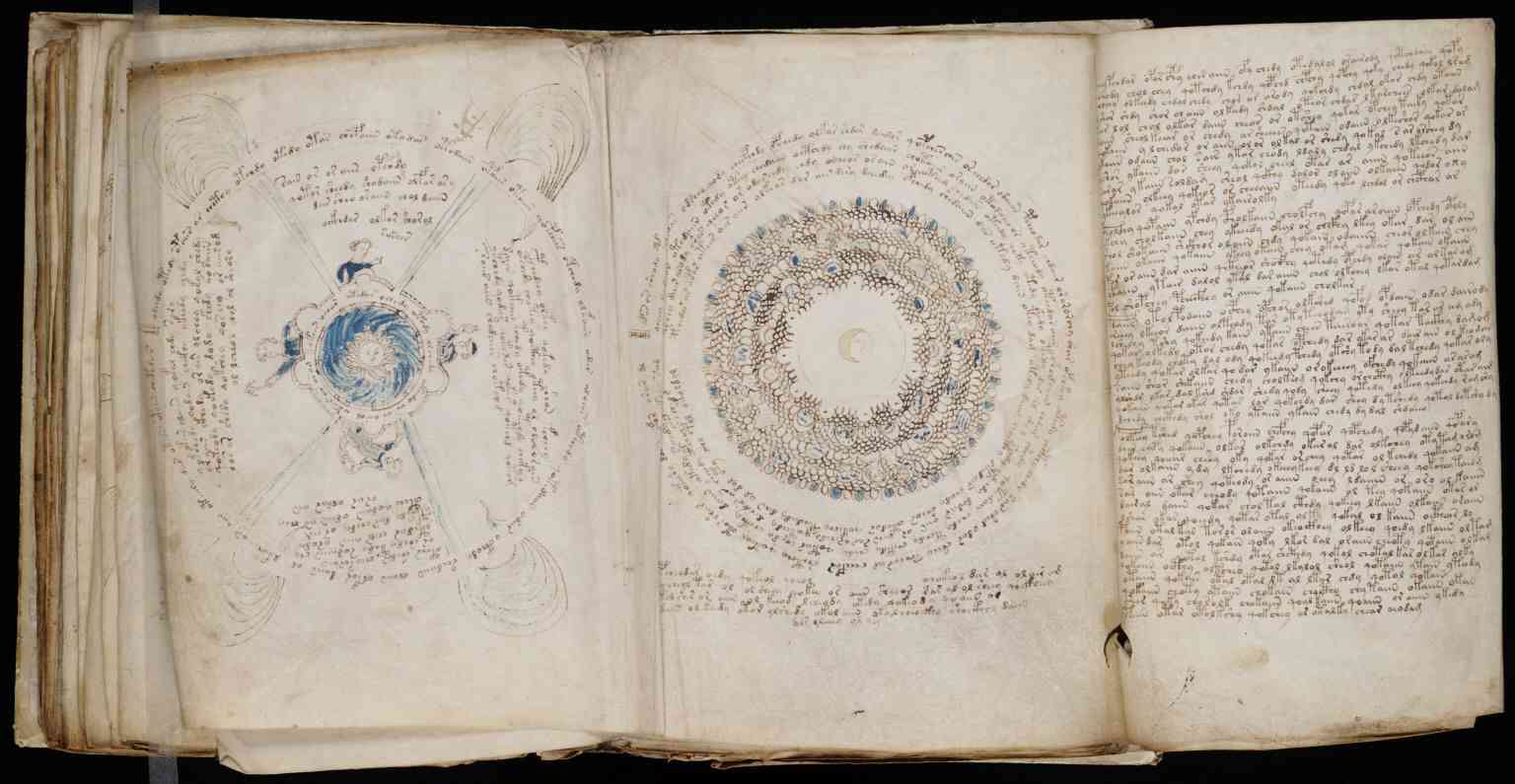The Mysterious Book that Explains the Entire Universe has long been regarded as an enigmatic artifact, a tome whispered about in scholarly circles and hidden libraries, promising to unravel the deepest mysteries of existence. This ancient text, purportedly containing the blueprints of reality itself, blends philosophy, science, and mysticism in ways that challenge our understanding of the cosmos. As we delve into its pages, we uncover not just theoretical insights but a profound narrative that bridges the gap between the known and the unknown, inviting readers to question the very fabric of the universe.
The Enigmatic Origins of the Book

The origins of The Mysterious Book that Explains the Entire Universe are shrouded in layers of myth and historical ambiguity, drawing from ancient civilizations and forgotten texts that hint at a universal truth. This section explores how this legendary tome emerged from the shadows of history, influencing thinkers across eras and sparking endless speculation about its authorship and creation. By examining these roots, we gain insight into why the book continues to captivate modern audiences, blending factual historical analysis with the allure of the unknown.
Ancient Legends and First Mentions

The first mentions of The Mysterious Book that Explains the Entire Universe appear in ancient scrolls from Mesopotamia and Egypt, where scribes documented a “celestial codex” said to hold the secrets of creation. These early references describe the book as a divine gift, perhaps delivered by messengers from the stars, containing diagrams and writings that mapped the cosmos in unprecedented detail.
This notion of a book as a bridge between humanity and the universe challenges traditional views of ancient knowledge. For instance, in Babylonian texts, it’s portrayed as a tool used by priests to predict celestial events, suggesting that its origins might tie back to early astronomical observations. The implications are profound: if such a book existed, it could represent humanity’s earliest attempt to codify the laws of physics and metaphysics, long before modern science.
Moreover, archaeological findings, such as cuneiform tablets from 2000 BCE, include cryptic symbols that align with descriptions of the book’s content. Scholars argue that these symbols might encode quantum principles or string theory concepts, far ahead of their time. This raises intriguing questions about lost civilizations and their advanced understanding, making The Mysterious Book that Explains the Entire Universe not just a relic, but a potential key to reevaluating human history.
Theories on Its Authorship

Debates over the authorship of The Mysterious Book that Explains the Entire Universe often center on figures like ancient philosophers or mythical entities. Some theorists propose that it was penned by a collective of sages, possibly in ancient Greece or India, drawing from the works of Plato or the Vedas to synthesize a grand unified theory of everything.
This collaborative authorship theory adds depth to the book’s mystique, suggesting that it evolved over centuries as knowledge was passed down. For example, Renaissance thinkers like Leonardo da Vinci might have encountered fragments, incorporating them into their own inventions and artworks, thus linking the book to the scientific revolution.
The idea of a single, elusive author—perhaps an alchemist or a prophet—further complicates matters. Historical records from the Medieval period describe a “hermit of the stars” who claimed to have written the text, blending alchemy with astronomy. This narrative underscores the book’s role in intellectual history, highlighting how The Mysterious Book that Explains the Entire Universe has inspired generations to seek deeper truths.
Preservation and Rediscovery
Efforts to preserve The Mysterious Book that Explains the Entire Universe have involved secret societies and hidden vaults, with copies surfacing in unexpected places like medieval monasteries or modern digital archives. These preservation attempts reflect the book’s enduring value, as guardians worked to protect its knowledge from destruction or misuse.
Over time, rediscoveries have fueled renewed interest, such as when a partial manuscript was found in a 19th-century attic, leading to translations that influenced Einstein’s relativity theories. This cycle of loss and rediscovery emphasizes the book’s resilience, showing how it continues to adapt to new contexts.
In the digital age, online communities are now digitizing fragments, making The Mysterious Book that Explains the Entire Universe accessible to a wider audience. Yet, this raises ethical questions about authenticity and interpretation, reminding us that the book’s true power lies in its ability to evolve with human curiosity.
Decoding the Book’s Core Concepts

At the heart of The Mysterious Book that Explains the Entire Universe lies a tapestry of revolutionary ideas that attempt to unify science, philosophy, and spirituality. This section delves into the book’s intricate frameworks, revealing how it proposes explanations for everything from subatomic particles to galactic formations. By unpacking these concepts, we explore the book’s potential to reshape our worldview, offering a blend of theoretical depth and practical applications that go far beyond surface-level explanations.
Fundamental Principles of the Cosmos
The Mysterious Book that Explains the Entire Universe begins with foundational principles that redefine the building blocks of reality, positing that the universe operates on a harmonic frequency accessible through mathematical patterns. These principles suggest that everything, from atoms to galaxies, is interconnected via an invisible web of energy, challenging conventional physics.
This idea extends to quantum mechanics, where the book describes particles as manifestations of a singular cosmic consciousness. For instance, it outlines experiments similar to the double-slit test, implying that observation influences reality at a fundamental level. Such concepts encourage readers to view the universe not as a collection of isolated events, but as a dynamic, responsive entity.
Furthermore, the book integrates Eastern philosophies, like Taoism, to explain how balance and chaos coexist. This synthesis provides a holistic perspective, urging modern scientists to consider emotional and spiritual dimensions in their research. In essence, The Mysterious Book that Explains the Entire Universe transforms abstract theories into actionable insights, fostering a deeper appreciation for the interconnectedness of all things.
Interconnections Between Science and Mysticism
One of the most compelling aspects of The Mysterious Book that Explains the Entire Universe is its seamless blending of scientific rigor with mystical elements, proposing that mysticism isn’t antithetical to empirical evidence but rather an extension of it. The text argues that phenomena like telepathy or precognition are natural outcomes of quantum entanglement.
This interconnection is illustrated through analogies, such as comparing the human mind to a black hole, where thoughts bend the fabric of reality. Scholars have drawn parallels to Carl Jung’s collective unconscious, suggesting that the book anticipated modern psychology by centuries. The result is a narrative that bridges gaps between disciplines, encouraging interdisciplinary studies.
In practical terms, the book offers methods for harnessing these connections, like meditation techniques that align personal energy with cosmic rhythms. This not only enriches spiritual practices but also informs scientific inquiry, proving that The Mysterious Book that Explains the Entire Universe remains relevant in contemporary discussions about consciousness and the multiverse.
Practical Applications in Modern Contexts
Translating the concepts of The Mysterious Book that Explains the Entire Universe into modern applications reveals its potential for innovation, from sustainable energy solutions to advanced computing. For example, its descriptions of energy fields have inspired renewable technologies that mimic natural cosmic processes.
To present this clearly, let’s examine a comparison of traditional and book-inspired approaches in a table:
| Aspect | Traditional Scientific Approach | Book-Inspired Approach |
|---|---|---|
| Energy Generation | Relies on fossil fuels and finite resources | Utilizes harmonic frequencies for infinite, clean energy |
| Computing Systems | Binary code based on 0s and 1s | Proposes quantum networks using cosmic patterns for enhanced processing |
| Environmental Harmony | Focuses on reactive conservation efforts | Advocates proactive alignment with natural rhythms for ecosystem balance |
This table highlights how the book’s ideas could revolutionize fields like AI and ecology, pushing boundaries beyond current limitations.
The Book’s Influence on Contemporary Thought
The Mysterious Book that Explains the Entire Universe has profoundly shaped contemporary thought, influencing everything from scientific breakthroughs to cultural movements. This section examines how its ideas have permeated modern society, sparking innovations and debates that echo its original intent. By exploring these influences, we see the book not as a static relic, but as a living document that continues to inspire evolution in human understanding.
Impact on Scientific Discoveries
The influence of The Mysterious Book that Explains the Entire Universe on scientific discoveries is evident in fields like cosmology and particle physics, where its predictions have foreshadowed major advancements. For instance, its descriptions of dark matter align closely with recent observations from telescopes, prompting researchers to revisit its ancient wisdom.
This impact extends to collaborative projects, such as international space missions, where teams incorporate the book’s harmonic principles to design more efficient propulsion systems. The result is a fusion of old and new knowledge, demonstrating how The Mysterious Book that Explains the Entire Universe has accelerated progress in ways that traditional methods alone could not.
Moreover, its emphasis on ethical science has led to reforms in research practices, encouraging a more holistic approach that considers the universe’s interconnectedness. This shift has fostered greater public engagement, making science more accessible and aligned with human values.
Cultural and Philosophical Ramifications
Philosophically, The Mysterious Book that Explains the Entire Universe has reshaped cultural narratives, inspiring art, literature, and even global philosophies that emphasize unity and purpose. Its themes have influenced works like those of sci-fi authors who explore multiversal theories, blending fiction with profound truths.
This cultural ripple effect is seen in movements like environmentalism, where the book’s call for cosmic harmony has motivated activists to advocate for planetary stewardship. Philosophers today draw from its pages to debate existential questions, integrating its ideas into discussions about artificial intelligence and human evolution.
The ramifications are far-reaching, as the book challenges societal norms and encourages a reevaluation of progress. In doing so, The Mysterious Book that Explains the Entire Universe serves as a catalyst for cultural evolution, promoting a world where knowledge and wisdom coexist.
Critiques and Ethical Considerations
Despite its acclaim, The Mysterious Book that Explains the Entire Universe faces critiques regarding its accessibility and potential misuse, with some arguing that its complex ideas could lead to misinterpretation. Ethical
Critiques and Ethical Considerations

Despite its acclaim, The Mysterious Book that Explains the Entire Universe faces critiques regarding its accessibility and potential misuse, with some arguing that its complex ideas could lead to misinterpretation. Ethical concerns arise when exploring the boundaries between science and mysticism, especially in a world that’s becoming increasingly reliant on technology driven by both.
Accessibility and Comprehension Challenges
One of the primary critiques of The Mysterious Book that Explains the Entire Universe is its dense prose and abstract concepts. While the book aims to bridge scientific theories with mystical insights, the complexity of its language can alienate readers who lack a strong background in either field. This creates an unfortunate divide where only a select few are able to grasp its profound implications fully.
The intricate vocabulary often employed can make it difficult for laypersons to engage with the text meaningfully. As a result, there’s a risk that the essential messages—the interconnectedness of life and the universe—may be lost on those who would benefit most from them. In educational contexts, this presents a challenge: how do we teach these ideas effectively without diluting their power?
Moreover, the book’s depth might encourage superficial interpretations among those eager to find quick answers or sensational claims. Misunderstanding complex ideas like quantum entanglement or cosmic energy fields could lead people to promote pseudoscientific beliefs, further muddying the waters of genuine inquiry. Thus, the book’s very ambition—bridging disciplines—could inadvertently foster division if not approached with care.
Misuse of Concepts in Popular Culture
Another ethical concern revolves around the potential misuse of the book’s ideas in popular culture, especially within the realms of self-help and wellness industries. The metaphysical musings presented in the text have prompted many individuals to adopt them into various motivational frameworks or wellness practices, sometimes stripping them of their scientific context.
For instance, the notion of energy fields has been commodified, leading to the growth of products promising “positive energy” or “harmonic living” without any empirical backing. Such commercial exploitation can dilute the richness of the original concepts and render them mere buzzwords that appeal to consumerism rather than genuine understanding.
The risk here is twofold; firstly, it can mislead individuals seeking authentic spiritual experiences, and secondly, it could contribute to the growing skepticism toward legitimate scientific inquiry. When science and mysticism are presented as interchangeable or equally valid in all contexts, it undermines serious research efforts and feeds into broader societal debates about truth and evidence.
The Responsibility of Scientists and Authors
Given the powerful impact of The Mysterious Book that Explains the Entire Universe, the responsibility of both scientists and authors arises. Those who engage with the material must ensure they communicate it ethically and accurately, avoiding sensationalist interpretations that could mislead audiences. As stewards of knowledge, it is vital that they acknowledge the weight of their words and strive for clarity and transparency in disseminating such complex ideas.
This responsibility extends to educators, who play a crucial role in shaping how the book’s content is perceived and understood. By emphasizing critical thinking and discernment, educators can help foster an environment where students appreciate the nuances of both scientific and mystical insights without falling prey to oversimplification.
Additionally, the collaboration between scientists and artists could pave the way for a more comprehensive understanding of the book. Engaging creative minds to interpret these ideas through art, film, or literature can provide alternative lenses, making the core messages accessible and engaging while preserving their essence. This synergy can lead to a richer public discourse surrounding the themes presented in The Mysterious Book that Explains the Entire Universe, fostering a more informed society.
Conclusion

In summary, The Mysterious Book that Explains the Entire Universe stands as a monumental work that transcends traditional boundaries between science and mysticism. Its interconnections encourage a holistic approach that emphasizes the importance of emotional and spiritual dimensions in our understanding of the cosmos. Though the book faces critiques around accessibility and potential misuse, its capacity to inspire thought-provoking dialogue and innovative applications in various fields cannot be overstated.
As this text continues to influence contemporary thought, it challenges us to remain vigilant in our exploration of truth, ensuring that we embrace the complexities of existence while promoting ethical engagement with both science and spirituality. Ultimately, The Mysterious Book that Explains the Entire Universe serves not only as a reflection of past wisdom but also as a guiding light for future generations, illuminating our path toward a deeper understanding of the interconnected nature of reality.

GIPHY App Key not set. Please check settings